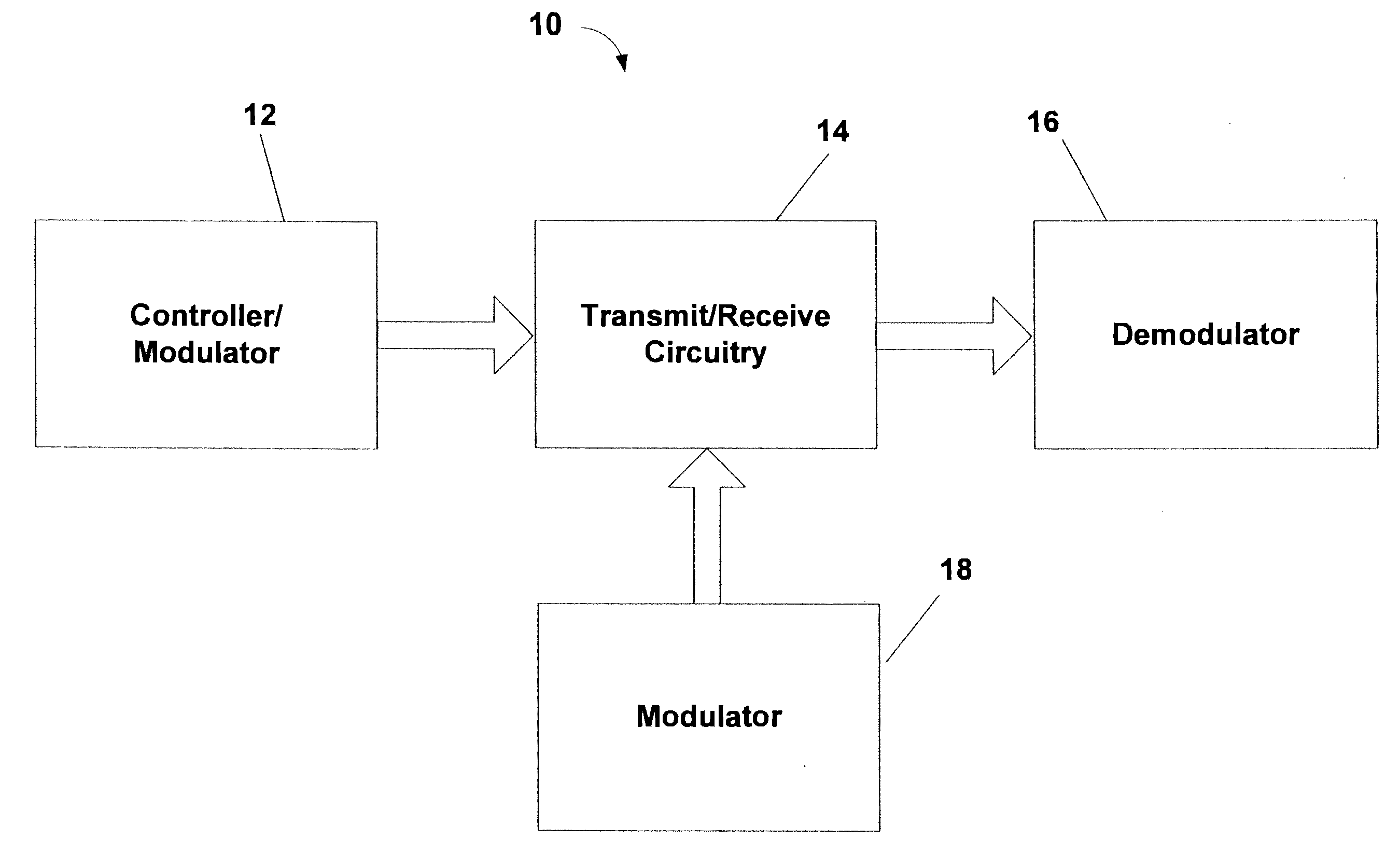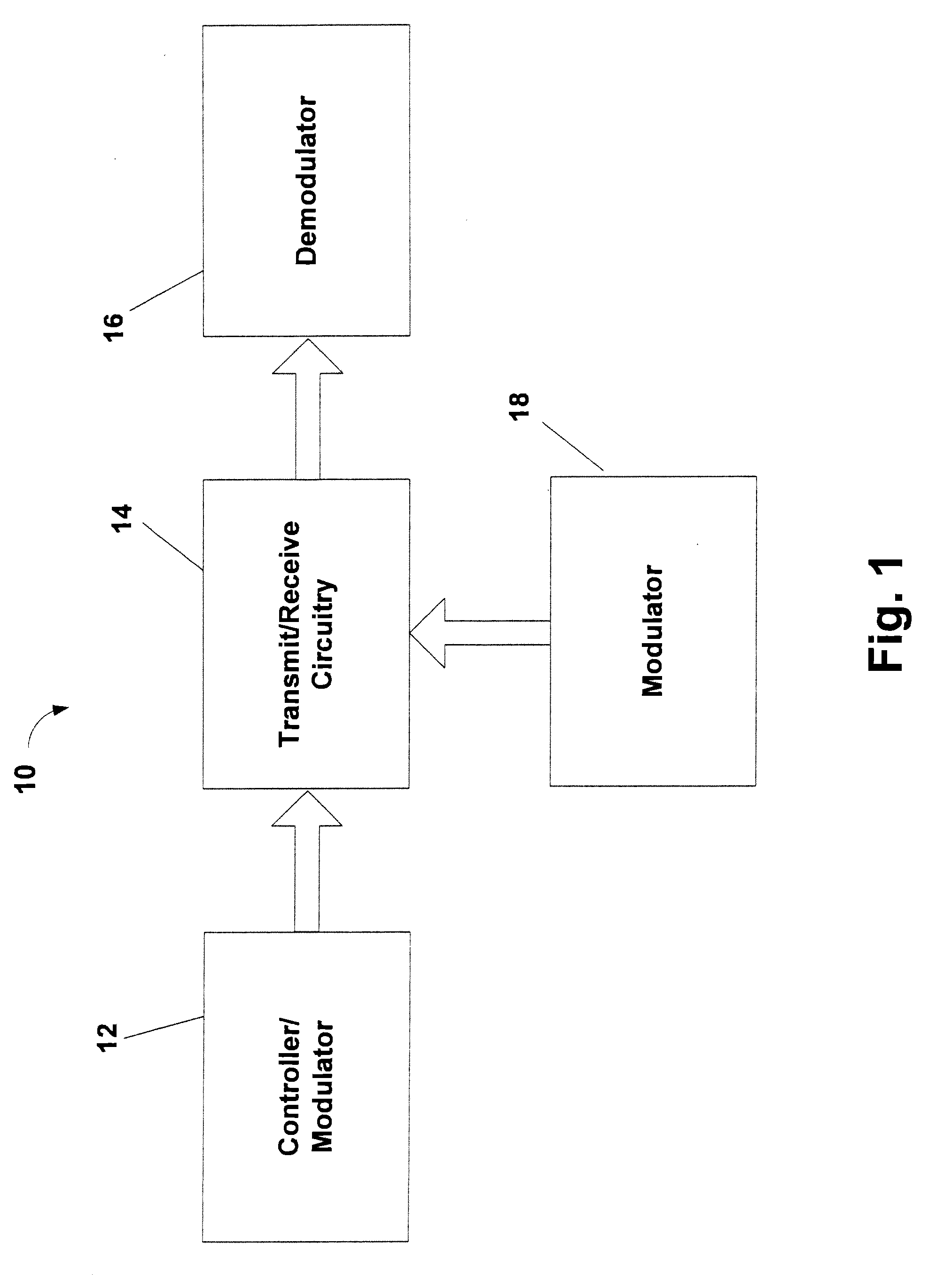Telemetry system and method with variable parameters
a telemetry system and variable parameter technology, applied in the field of telemetry systems, can solve the problems of limited data transmission and reception range of implantable devices, limited freedom of movement of implantable devices, and inability to move freely, so as to increase the bandwidth of programmable circuits
- Summary
- Abstract
- Description
- Claims
- Application Information
AI Technical Summary
Benefits of technology
Problems solved by technology
Method used
Image
Examples
Embodiment Construction
[0036] In the following description of preferred embodiments, reference is made to the accompanying drawings which form a part hereof, and in which are shown by way of illustration specific embodiments in which the invention may be practiced. It is to be understood that other embodiments may be utilized and structural changes may be made without departing from the scope of the preferred embodiments of the present invention.
[0037] Although the following description is directed primarily toward telemetry systems in which the bandwidth and Q are variable, embodiments of the present invention may be implemented in a variety of ways and used in a variety of capacities and applications. For example, embodiments of the present invention may be implemented in such a way such that other parameters of the telemetry circuit, such as the power output or transmit distance, for example, are variable. Also, embodiments of the present invention may be used in various applications, such as, for exa...
PUM
 Login to View More
Login to View More Abstract
Description
Claims
Application Information
 Login to View More
Login to View More - R&D
- Intellectual Property
- Life Sciences
- Materials
- Tech Scout
- Unparalleled Data Quality
- Higher Quality Content
- 60% Fewer Hallucinations
Browse by: Latest US Patents, China's latest patents, Technical Efficacy Thesaurus, Application Domain, Technology Topic, Popular Technical Reports.
© 2025 PatSnap. All rights reserved.Legal|Privacy policy|Modern Slavery Act Transparency Statement|Sitemap|About US| Contact US: help@patsnap.com



